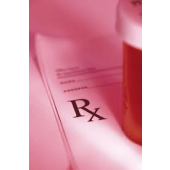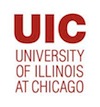Top 75 Pharmacy Schools in the U.S.

In preparing our inaugural list of the top schools in the US for aspiring pharmacists, we considered over 100 schools in the US that offered pharmacy programs. Our goal with this list is to give students access to information so they can make informed decisions about the schools they choose to attend and the programs they pursue. Our motivation for publishing these rankings is simple. We frequently receive emails from young people -many of whom are already working as pharmacy technicians- asking for advice as to which pharmacy schools they should consider. Our hope is that this list is a starting point for aspiring pharmacists to discover the schools that are the best fit for them.
The criteria we used in making this list consists, in no particular order, of the following: academic reputation, admission selectivity, depth and breadth of the program and faculty, size and scope of the pharm school class, and value as it relates to tuition. All data used on our rankings was obtained from publicly available sources.
Like any list, ours is not perfect and is open for debate. There is no single opinion that trumps all when it comes to which school is the “best”. Ultimately every student has different needs regarding the type and academic rigor of a program, campus culture, as well as cost, lifestyle, and career focus.
 1. Purdue University College of Pharmacy, West Lafayette, Indiana
1. Purdue University College of Pharmacy, West Lafayette, Indiana
Purdue University was established in 1869 and opened to the public in 1874. When it opened, Purdue consisted of a 100-acre campus and it was home to just 39 students and six instructors. Today, the school sits on a sprawling 2,552 acres and it is home to 37,536 students enrolled in more than 270 programs. The school ranks in the top 25 public universities in the U.S. by U.S. News & World Report and 65th among all universities in the U.S.
Founded in 1884, Purdue University’s College of Pharmacy was a Top Ten Pharmacy school in 2002, 2004, and 2008 (survey). It is one of the largest Pharmacy Graduate Programs in the nation and it serves as an Accreditation Council for Pharmacy Education (ACPE) Continuing Education (CE). The College also offers more pharmacy programs than just about any other school in the U.S.
The Purdue University College of Pharmacy offers a Pre-Pharmacy program, a B.S. in Pharmaceutical Sciences, a M.S. in Pharmacy Administration or Clinical Pharmacy, a M.S. in Regulatory and Quality Compliance, a Doctor of Pharmacy, and a Pharm.D./Ph.D. Dual degree program. The College also offers a Nuclear Pharmacy Certificate program, a Certificate in Regulatory and Quality Compliance, and a Minor in International Pharmacy.
The cost of tuition varies by program and degree level. Some programs have additional fees per semester and some do not. However, the undergraduate and graduate costs of attendance for a full-time student should give you an idea of what you can expect to pay per semester—for tuition and fees only.
Estimated fees and tuition per semester for both undergraduate and graduate students are $4,996 for Indiana residents, and $14,397 for non-residents (2013-2014). Doctor of Pharmacy (Pharm.D.) students pay $11,048 per semester (resident) or $20,178 per semester for non-residents.
 2. University of California, San Francisco, San Francisco, California
2. University of California, San Francisco, San Francisco, California
The University of California, San Francisco (UCSF) was founded in 1864. The school, which is the second largest employer in San Francisco, is the only campus in the
10-campus University of California system “dedicated exclusively to the health sciences.” The University’s professional schools, graduate programs, Medical Center, and Children's Hospital “consistently” rank among the best in America by U.S. News & World Report.
The school’s 255-acre campus is home to 2,940 students, 1,030 postdoctoral scholars, and 1,620 residents consisting of physicians, dentists, and pharmacists in training.
UCSF’s top-ranked School of Pharmacy was founded in 1872 as the California College of Pharmacy. Home to 844 students, the School of Pharmacy was the first pharmacy school in the west. It offers a wide variety of programs including a Doctor of Pharmacy with degree pathways in Pharmaceutical Care, Health Services & Policy Research, and Pharmaceutical Sciences as well as a Ph.D. in Bioengineering (BioE), Bioinformatics (BI), Biophysics (BP), Chemistry and Chemical Biology (CCB), and Pharmaceutical Sciences & Pharmacogenomics (PSPG), and a M.S. in Transitional Medicine.
The cost of attendance, including student services, fees, and tuition only are $35,382 for Pharmacy 1, 2, and 3 programs (9 months), and $35,307 for the Pharmacy 4 program (9 months). These amounts do not include non-resident supplemental tuition of $12,245. It is important to note that tuition and student services fees are subject to change without notice.
 3. University of Illinois at Chicago College of Pharmacy, Chicago, Illinois
3. University of Illinois at Chicago College of Pharmacy, Chicago, Illinois
The University of Illinois at Chicago (UIC) was formed in 1982, with the merging of the Medical Center campus (which dates back to the 19th century) and the Chicago Circle campus. This public research university is home to around 27,512 students, enrolled in more than 240 degree programs.
The campus, which sits on 240+ acres, houses 15 academic colleges—including the College of Medicine. The College of Medicine is the largest in the nation and it educates an impressive one in six Illinois physicians. Equally as impressive is UIC’s College of Pharmacy.
The College of Pharmacy was established in 1859, making it the oldest academic unit of the University of Illinois and one of the oldest pharmacy school's in the nation. Ranked among the Top Ten colleges of pharmacy in the nation by U.S. News & World Report and in the Top Ten U.S. colleges of pharmacy receiving National Institutes of Health research funding, the College of Pharmacy is home to 883 students, 40 residents and fellows, and 189 full and part-time faculty.
Program offerings include a Pharm.D. as well as graduate programs in Biopharmaceutical Sciences, Forensic Science, Forensic Toxicology, Medicinal Chemistry, and Pharmacognosy. Joint degree programs include the Pharm.D./Ph.D., Pharm.D./MBA, Pharm.D./M.S.-CTS, and the Pharm.D./MSHI. The Pharm.D. program is also offered at the 20-acre University of Illinois College of Medicine at Rockford.
Graduate base tuition and fees for Fall 2013 and Spring 2014 are $5,533 full-time/in-state/per semester and $11,532 full-time/out of state/per semester.
 4. The Ohio State University College of Pharmacy, Columbus, Ohio
4. The Ohio State University College of Pharmacy, Columbus, Ohio
Established in 1870, The Ohio State University (OSU) is among the nation’s top 20 national public universities, according to U.S. News & World Report’s America's Best Colleges. The school, which sits on 1,700 acres, is home to more than 55,000 students, making it one country’s largest universities. OSU houses four colleges that offer 175 undergraduate majors, and 240 masters, doctoral, and professional degree programs.
OSU’s Medical Center has made its mark in the world of medicine by becoming one of “America’s Best Hospitals” for the 18th consecutive year. The medical center is one of only 21 hospitals in the nation named to U.S. News & World Report’s elite Honor Roll.
The College of Pharmacy at OSU is also a leader in one of the most significant fields of medicine—Pharmacy.
The College of Pharmacy has led the field of pharmacy since it’s founding in 1885. One of the six original colleges at The Ohio State University, the College of Pharmacy consists of six academic divisions including Pharmaceuticals & Pharmaceutical Chemistry, Pharmacology, Pharmacy practice & Administration, and Medicinal Chemistry & Pharmacognosy.
Degree programs include a B.S. in Pharmaceutical Sciences (BSPS), a M.S. in Community Care and Health-Systems Pharmacy Administration, a Pharm.D. and a Ph.D. in Pharmaceutics, Pharmacology, Medicinal Chemistry & Pharmacognosy, and Translational Science. The College also offers several combined programs including the Pharm.D./MBA or Pharm.D./MPH
College of Pharmacy tuition for years 1-3 is $20,472.80 per year in-state and $22,717.20 for year 4. Out-of-state tuition for years 1-3 is $39,072.80 per year and $43,153.20 for year 4. Tuition costs include all fees.
 5. University of Minnesota School of Pharmacy, Minneapolis, Minnesota
5. University of Minnesota School of Pharmacy, Minneapolis, Minnesota
Established in 1851, the University of Minnesota (U of M) is home to more than 69,000 students. The school has five campuses (Twin Cities, Crookston, Duluth, Morris, and Rochester) and it offers more than 180 programs at the Twin Cities (Minneapolis-St. Paul) campus alone. U of M is currently home to two MacArthur “Geniuses,” and it has produced an enviable 86 Guggenheim Fellows and 20 Nobel Laureates.
The University of Minnesota campus sits on 1,150 acres in Minneapolis and St. Paul. It houses 19 colleges and schools, and offers a wide variety of continuing education and professional development programs. One of the school’s top colleges is the College of Pharmacy.
Founded in 1892, the College of Pharmacy at the University of Minnesota (U of M) is the only pharmacy school in the state. Ranked among the Top Ten Schools of Pharmacy by U.S. News & World Report, the College of Pharmacy at U of M provides education and training to roughly two-thirds of the state's 7,500 active pharmacists. The College consists of two connected campuses—one in the Twin Cities and the other in Duluth, and it is home to more than 280 students.
Program offerings include the Pharm.D. degree, M.S. programs in Integrated Biological Sciences, Social and Administrative Pharmacy, and Combined Social & Administrative Pharmacy Residency Program, Ph.D. programs in Medicinal Chemistry, Pharmaceutics, Experimental Pharmacotherapy, Social and Administrative Pharmacy, and Integrated Biological Sciences, and dual degrees including the Pharm.D./MBA, and the Pharm.D./MPH.
The Pharm.D./MBA program is offered through two schools—the Carlson School of Management and the Labovitz School of Business and Economics.
Tuition rates for the College of Pharmacy are $991 per credit for years 1-3 (or $11,892 per term for 12+ credits), and $11,892 per term for year 4, regardless of credit load. Nonresidents pay $1,466 per credit for years 1-3 (or $17,592 for 12+ credits) and $17,592 for year 4, regardless of credit load.
Pages

- Facebook Like
- Google Plus One
- 732312 reads


